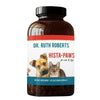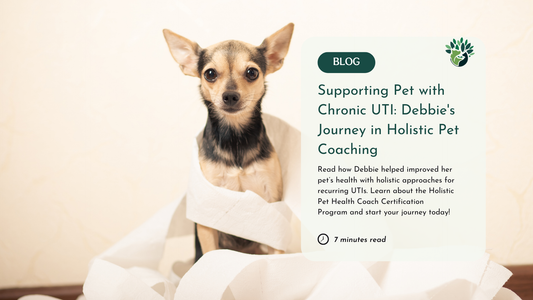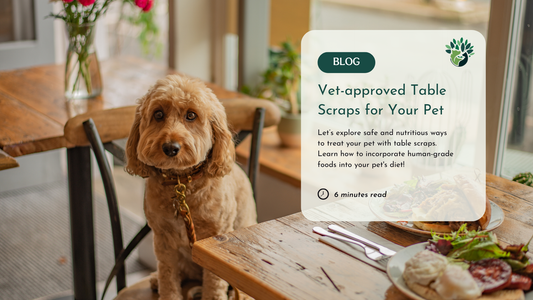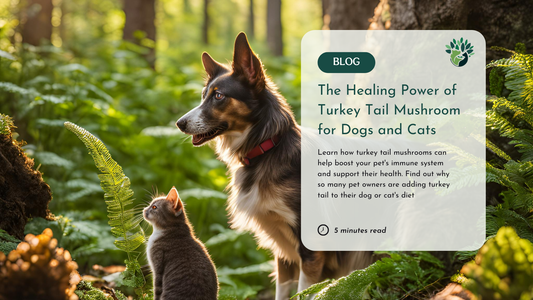Why Dental Health Matters for Pets
Dental health. Two words that instantly strike fear into the hearts of many, but can also make even the most steel nerved pet parents cringe. Keeping your pet’s teeth clean may seem daunting, because most folks think that means anesthesia or a toothbrush-inspired wrestling match. Fortunately, good dental health for pets doesn’t have to be hard, but it should be a top priority in your pet’s preventative care.
Why is dental health for pets important?
You spend a lot of time up close and personal with your pet, so the last thing you want is a mouth full of smelly, slimy teeth! Bad breath is unpleasant for sure, but is often an indication of something much more serious.
Bacteria and infection in the mouth are usually the reason behind that foul breath. A decaying or dead tooth, and even just unhealthy gums, are going to mean lots of bacteria in the gums and the rest of the mouth. This is painful and unpleasant for your pet, and can lead to problems chewing and eating, as well as inflammation and infection in the rest of the body.
Dental Health = Overall Health
Many pet owners are surprised to learn that their pet's dental health has a direct impact on their pet's overall health. Your pet’s heart pushes blood through their entire body at a pretty impressive rate. This means that the blood that passes through your pet’s mouth is going to run a course through their internal organs as well.
If your pet’s gums are full of infection, that bacteria can easily be spread to the rest of the body - including their vital organs. In fact, many cases of heart and kidney disease likely begin with dental disease that has spread.
Bacterial infection is infamous for causing inflammation. Triggered by infection in any part of the body, inflammation can easily and quickly spread to affect the joints, gut, skin or vital organs. So, if your pet is suffering from arthritis or skin allergies, you may need to take a look at their pearly whites and see if the condition of their mouth is lending to their other health issues.
How can I keep my pet’s mouth healthy?
Establish a routine
Just as you can prevent overall health issues with proper preventative care, dental health issues are best handled with proper prevention. When your pet is young, establish a dental care routine early. Start by mixing some baking soda with bacon grease or another oil, and rub it over your pet’s gums and teeth with your finger. Doing this will get them used to brushing and oral care. You can eventually graduate to a finger brush, and are welcome to try the enzymatic toothpastes available for pets (just pay careful attention to the ingredients, especially if your pet has allergies).
Make sure your vet regularly examines your pet’s mouth and teeth, and get their teeth professionally cleaned on a somewhat regular basis (your vet will be able to tell you when it’s time).
The right food will help
When starting home cooking with The Original CrockPet Diet, some pet owners come to me with concerns that the soft food won’t keep their pet’s teeth clean. The reality is, it does a much better job than most other “crunchy” foods. Raw foods do promote clean teeth, but lead to major GI trouble and subsequent worsening health issues.
The fact is, most pets don’t actually chew kibble. Many of them swallow the kibbles without chewing, which does no favors for their teeth. The dry food also whisks away the saliva and moisture that IS present in their mouth, which promotes bacterial growth.
Because The Original CrockPet Diet yields such delicious tasting food, pets actually chew the food - because they enjoy it! This flavor bonus also stimulates the production of saliva, helping to reduce and whisk away bacteria. Increased moisture in the mouth (and better hydration overall) leads to a much cleaner and healthier set of chompers.
Adding in some of this powder from This Dog’s Life can dramatically help clean your pet’s teeth! The natural ingredients help fight bacteria and remove plaque, to make your pet’s teeth cleaner and gums healthier.
Crunchy Chews and Treats
These Chews from This Dog’s Life are my favorite teeth-cleaning “treats.” They’re made with natural, safe ingredients, and they really work! Best of all, they break down naturally in your pet’s stomach, so there’s no chance of GI obstruction (like is common with a popular teeth “cleaning” treat).
If your pet is picky, or you’d rather give them something fresh - turn to the fridge! Crunchy fruits and veggies like carrots, broccoli stems, celery and apples make great treats. Their crunchy texture helps clean plaque from your pet’s teeth as they chew.
Even a nice bone can help keep your pup’s teeth clean. Just make sure it’s one that won’t splinter. Beef bones are best, and deer antlers are a great choice, too. Avoid pork or poultry bones, as those can splinter and severely damage your dog’s GI tract. If your pet is older, be careful with bones. An overly-excited pup with soft or old teeth can easily fracture a tooth on a bone.
What if my pet already has dental disease?
If your pet is healthy...
If you’re late to the game of dental health for pets, but your dog or cat still has youth on their side, you’re in luck. A professional dental cleaning, done by a good veterinarian and team of technicians, is the best way to get your pet’s mouth clean and back on track. Your vet will clean and polish all of your pet’s teeth, and remove any infected or broken teeth (preventing future infection). Removing the infected teeth, and thoroughly flushing the sockets, eliminates the source of infection from your pet’s mouth.
Just make sure you are choosing the right veterinarian to conduct the dental cleaning, with close regard to the following elements.
- Anesthesia
This is a big one, and something your vet should pay VERY close attention to. Be sure your vet is using safe anesthesia methods. Sevoflurane gas, with a sedation method like IV propofol, is the safest anesthesia method for pets. It also helps make recovery much easier for your pet.
Your vet should have a team of technicians working with them through the procedure. One technician should be tasked with constant and dedicated anesthesia monitoring through the procedure. This means they carefully watch (and record) your pet’s vitals throughout the procedure, making sure they are responding well and don’t need any adjustments. Another technician will help your vet scale and polish teeth, assisting in tooth removal (if needed) and proper cleaning and flushing.
It truly takes a dedicated team to complete a dental cleaning properly. So, be sure to ask your vet about these specifics. If they only have one tech (or none at all) helping with the procedure, proceed with caution (or not at all). You might want to ask for more details, or find a vet with a larger team that can be more attentive. Anesthesia is not something to take lightly.
- IV Catheters
Giving your pet an intravenous catheter, prior to surgery, is a good thing! This allows your vet’s team to safely and efficiently administer medications that may be needed before, during, or after the procedure. IV sedation prior to anesthesia (with a drug like propofol) is a safe, stress-free and effective way to get the process started. Throughout the cleaning, your vet may want to administer antibiotics and/or fluids, to make sure your pet avoids infection and dehydration. This puts them on the road to recovery before they even wake up!
- Pain Control
A dental cleaning is no walk in the park for a dog or cat (that’s one of the reasons they really must be sedated for it). Your vet is going to very thoroughly clean every surface of each tooth, including areas around and under the gumline. And if your pet needs extractions, that means a pretty significant about of discomfort.
Even though this dental cleaning is critical to keeping your pet healthy, chances are good that it’s going to hurt a little. Your vet may administer some pain medication through your pet’s IV, and possibly send some home so you can continue the relief while your pet heals. If your vet offers it, post-surgical acupuncture (especially with Vitamin B) can greatly improve your pet’s level of pain or discomfort.
If your pet is elderly or has other health issues
For pets who are sick or much older, anesthesia can be scary. The last thing you (or your vet) want to do is put an old, sick animal under anesthesia. So, if your pet is not healthy enough for a professional cleaning, you’ll need to try some other things to help their mouth feel a little better.
Infection and pain in the mouth can make it hard for your pet to eat or chew, so it’s crucial to help relieve dental discomfort. Try adding some of the Bye Bye Dog Breath powder to your pet’s home cooked food for a pain-free start. If your pet will let you brush their teeth (or at least rub that baking soda solution on their gums), give it a go. You can even flush your pet’s mouth with a peroxide-water solution, to help reduce bacterial infection. Use one part peroxide and ten parts warm water, and rinse the area along your pet’s gumline.
Cold laser therapy can also work wonders relieving dental pain and inflammation. Ask your vet if they offer the service, or check out Vetrolaser’s hand-held cold laser that you can use at home!
It’s worth noting that even much older pets can safely undergo anesthesia, so long as it is done safely (see above). Talk to your vet about it, or feel free to reach out to me if you need help deciding whether your pet can safely undergo this procedure, or if you should stick with alternative options.
Don’t Shy Away
Dental health for pets doesn’t have to be scary, and it shouldn’t be hard. Start as early as you can, and establish a daily dental routine with your pet. Give them healthy food, and helpful chews or supplements whenever possible. Make sure you bring your pet in for a regular exam, so you know when they need a professional cleaning, or if a tooth has broken or become infected.
As with every other aspect of your pet’s health, the key to good dental health is prevention! Be vigilant, be aware, and don’t be afraid to ask for help. Your pet will thank you, and be much healthier and happier with a healthy mouth.














